If you’re heading to the Crystal Coast, don’t miss a chance to explore Fort Macon State Park–also known as one of the most-visited state parks in North Carolina!
Located in the popular coastal town of Atlantic Beach, Fort Macon, NC is an absolutely delightful state park, featuring both a well-preserved historical fort and a phenomenal beach for relaxing and swimming.
It’s also a place that I love dearly: of all the beaches in all the world, I have spent more hours on this one than any other–and by quite a wide margin, too!
If you’re considering a visit to Fort Macon State Park, here’s what to know before you go.
Table of Contents
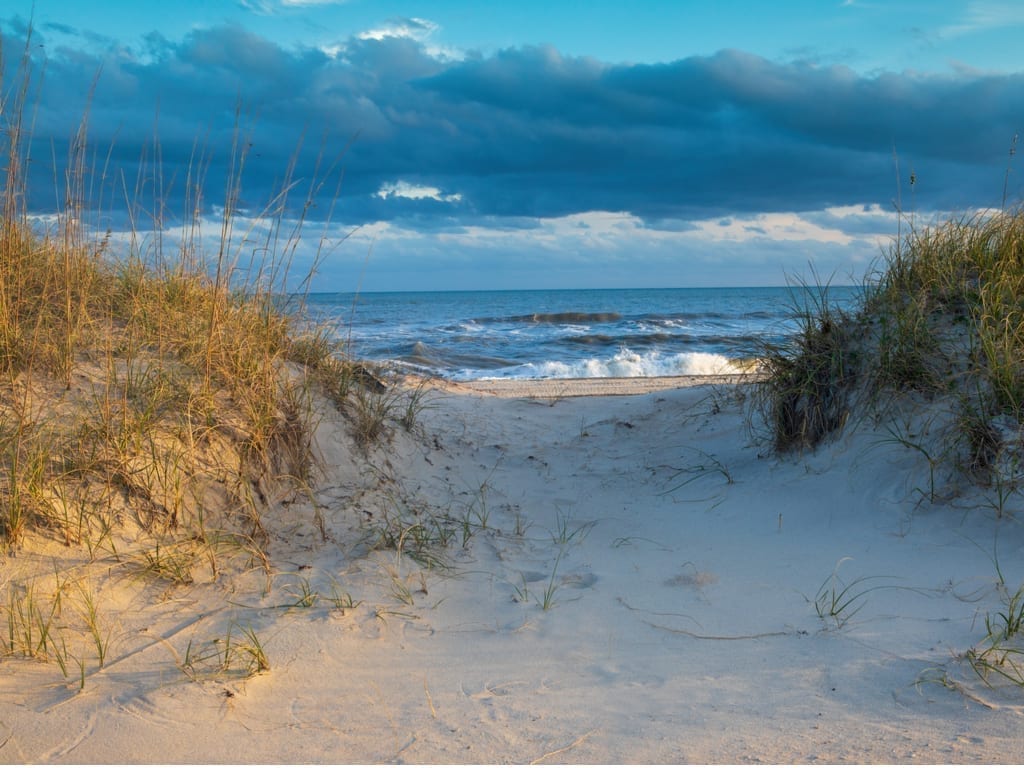
A Brief History of Fort Macon, NC
Completed in 1834 after 8 years of construction, Fort Macon, NC is one fort in a series that was built along the eastern coast of the USA following the War of 1812.
The 19th century wasn’t the first time a fort was contemplated for the area, though.
The nearby coastal town of Beaufort was captured by both the British and the Spanish at various points during the 18th century, and also sustained attacks from pirates in the area (Blackbeard included).
Clearly, a local defense system was needed.
In 1756, construction of Fort Dobbs began in the area, though that original fort was never completed.
Later, a smaller fort named Fort Hampton defended the Beaufort Inlet during the War of 1812 before being unceremoniously swept away by a hurricane in 1825.
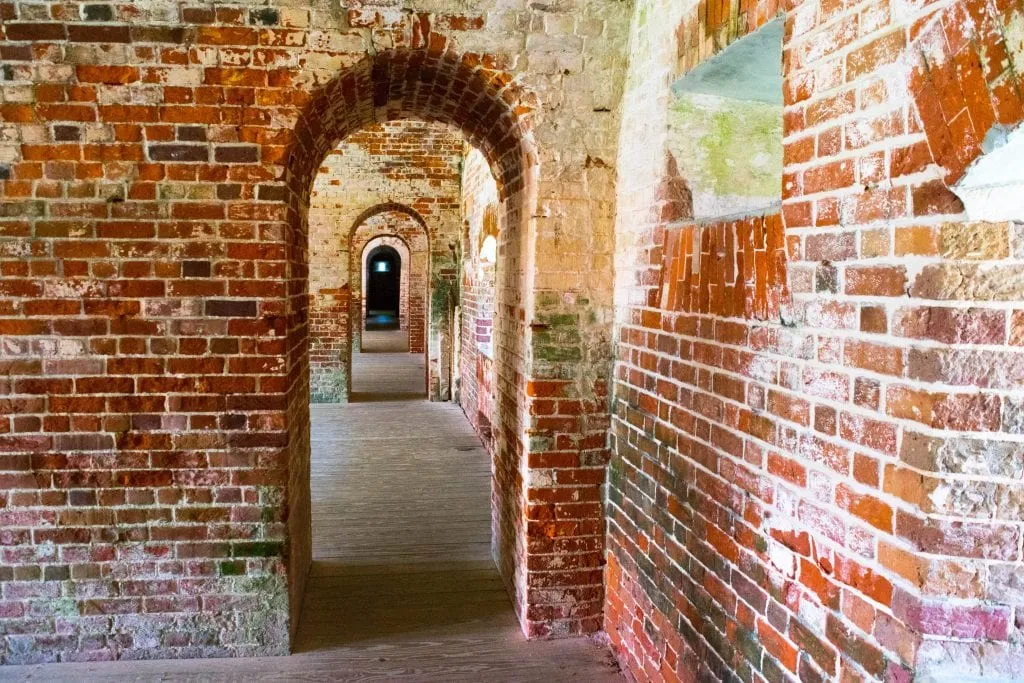
Once Fort Macon was built, though, it saw quite a bit of action, starting with being the site of a Civil War battle (the Union captured Fort Macon from the Confederates in April 1862 and kept control of the fort for the rest of the war), and as a federal prison for 11 years during the Reconstruction era.
Later, in the Spanish-American War of 1898, the fort was garrisoned, and notably, was the assigned location of an all-volunteer Black regiment led by all-Black officers, which was extremely notable for the time (and was likely one of the first regiments of its kind).
Fort Macon was initially purchased by the state of North Carolina in 1924, and with the exception of being garrisoned during World War II (you can spot the remains of WWII-era bunkers in the park), it has been a state park ever since.
Today, Fort Macon is one of the most popular state parks in North Carolina, attracting over a million visitors each year.
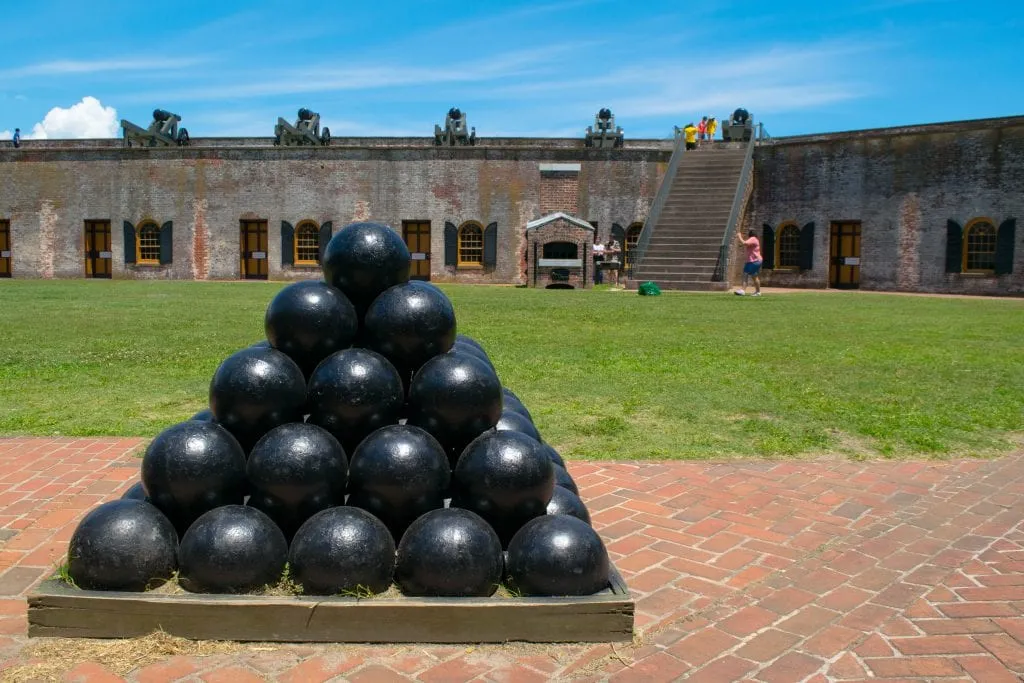
The Best Things to Do at Fort Macon State Park
Tour Fort Macon itself.
The Fort Macon of today is well-restored and very interesting to visit–it’s well worth checking out before hitting the beach!
Exhibits focus on various aspects of the fort’s life, exploring the daily life of soldiers who lived there as well as some of the broader history of the fort.
You are welcome to explore independently, and guided tours are also offered during the high season.
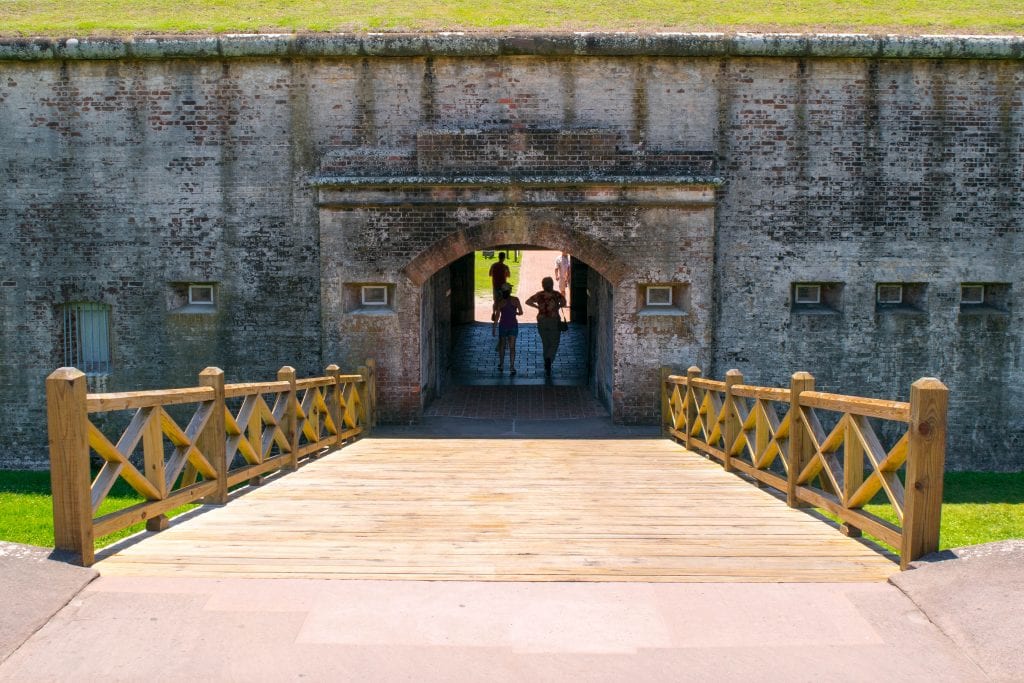
Enjoy a beach day.
The beach at Fort Macon is everything you hope for in a North Carolina beach: sandy and clean, with rolling waves, beautiful sand dunes, and excellent sunrises and sunsets.
With free parking, on-site lifeguards during the summer, a seasonal concession stand, plenty of shaded picnic tables, and showers for getting rid of (some of) the sand before hopping back in the car, the Fort Macon beach is a longtime favorite of families, including mine.
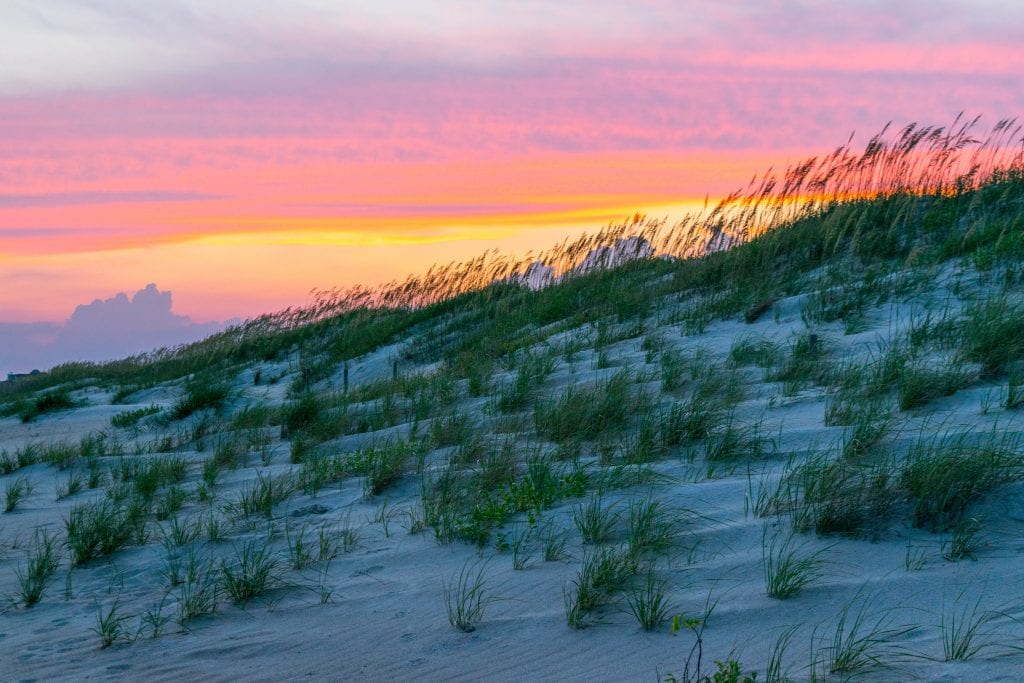
Go fishing.
There are great year-round fishing opportunities in Fort Macon State Park!
Take a quick hike.
There are a couple of trails at Fort Macon to hike in addition to simply strolling along the beach–that is, if you can tear yourself away from the ocean long enough to enjoy them!
The Elliot Coues Nature Trail is a favorite of ours, offering a great mix of things to see, including the remains of a WWII bunker.
The real star of the trail, though, is undoubtedly the chance to admire the ocean from above.
Don’t forget to pack bug spray if you want to hike anywhere but on the beach!
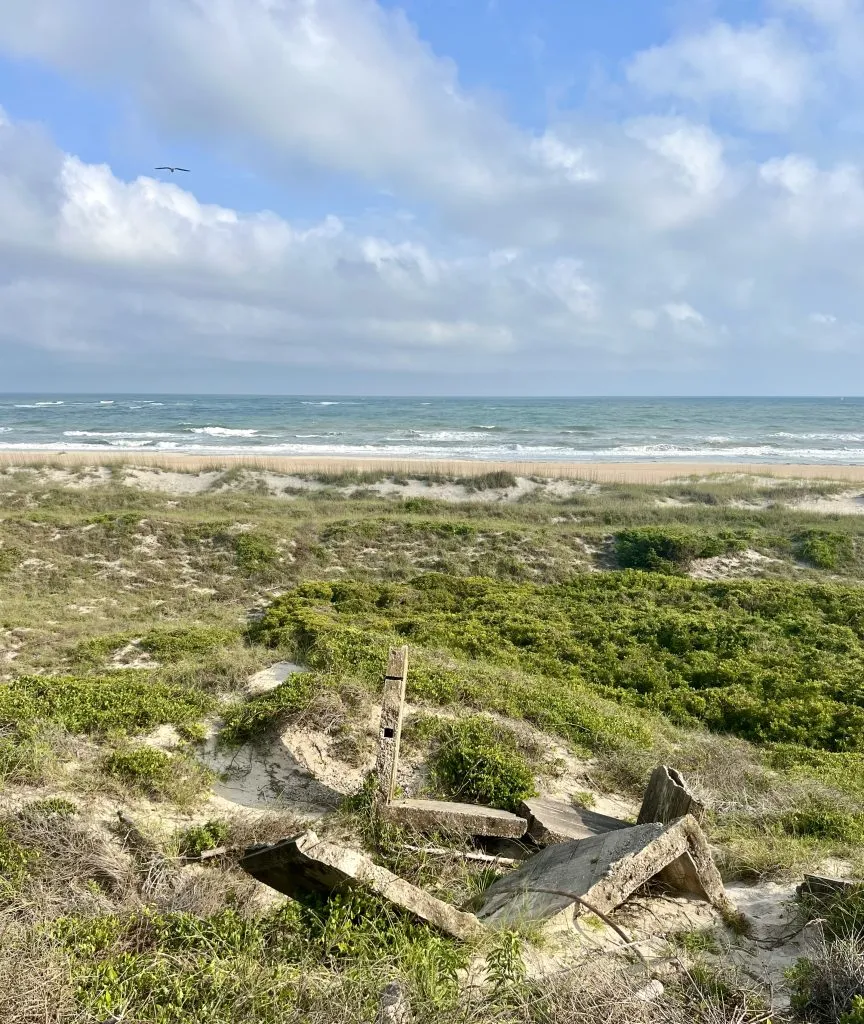
Tips + Logistics for Visiting Fort Macon, North Carolina
Fort Macon State Park is free to visit.
With the exception of using the indoor bathhouse at the beach, Fort Macon State Park is completely free to visit–fort, beach, trails, and all.
There are showers, changing rooms, and restrooms at the beach.
All but the restrooms are seasonal and close during the winter, but during the busy summer months, there are plenty of services!
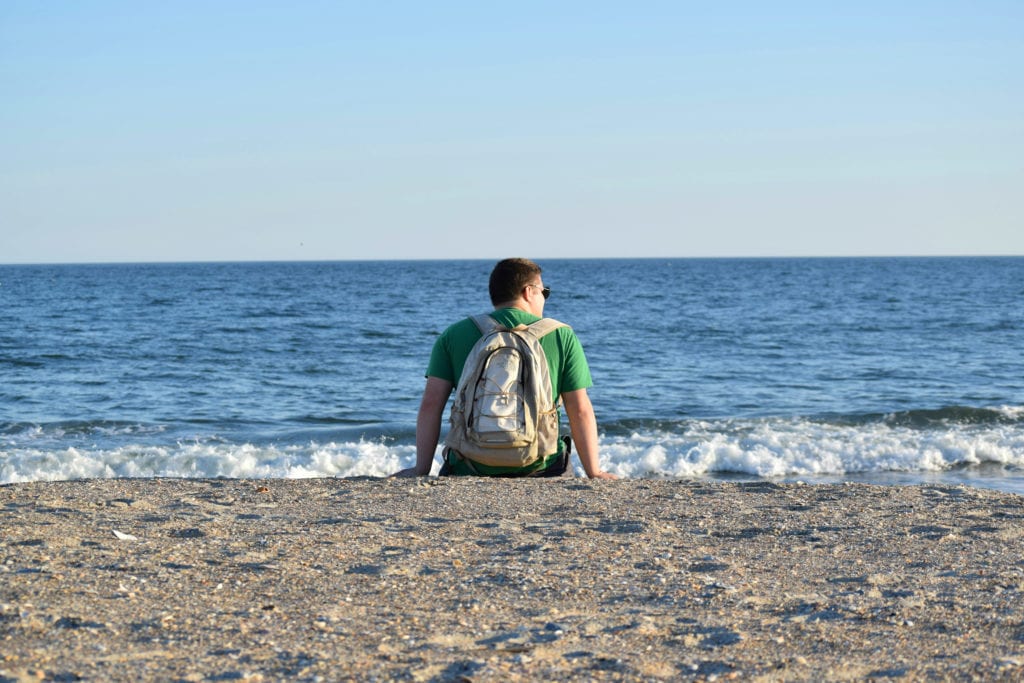
There’s a snack counter at the beach (open seasonally).
Prices are a little steep as compared to shopping in Atlantic Beach or Morehead City before arriving at the park, but if you’d like a quick snack, basic foods and cold drinks are available.
The picnic areas are always available.
… and come complete with grills, shade, and (especially around sunset) probably some rabbit spottings.
During the summer, there are lifeguards at the beach.
Lifeguards are typically on duty at Fort Macon State Park from 10:00 AM to 5:45 PM, Memorial Day through Labor Day.
The beach is open year-round, but outside the summer months, swimming is undertaken only at your own risk.

Be cautious of currents.
The currents at Fort Macon can get very strong–for that reason, it’s recommended to only swim in the protected areas.
Fort Macon is dog-friendly!
Well-behaved, leashed dogs are welcome on the beach (outside of the lifeguarded areas) and trails at Fort Macon year-round–and our dog, Ranger, loves to visit!
Note that pets are not allowed in the fort itself.

Consider touring the fort before visiting the beach.
It doesn’t take too long to tour Fort Macon, but the fort itself is incredibly well-preserved and worth taking the effort to see before getting sandy!
The typical visit to the fort itself lasts about an hour.
Read More About Visiting North Carolina + the South
Planning a trip to North Carolina soon, or further afield in the south?
You might like these guides, too!
- 17 Spectacular Southern USA Road Trip Itinerary Ideas
- How to Take a Charming Day Trip to Cape Lookout, NC
- 14 Great Restaurants in Atlantic Beach, NC
- 25+ Best Weekend Getaways in the South
- 17 Incredible Things to Do in New Bern, NC
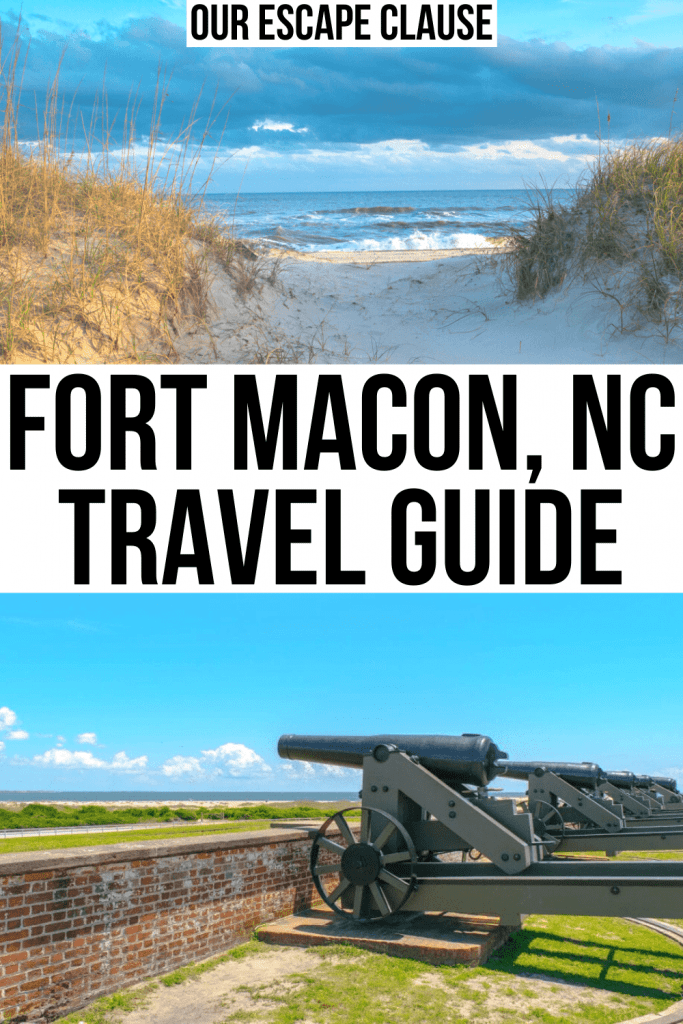
[convertkit form=3386343]
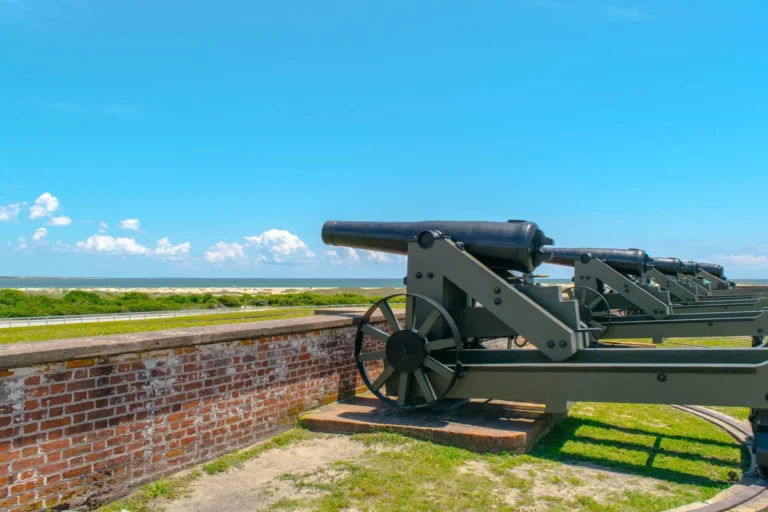
Are dogs allowed in the Fort and in the beach? We are coming in early April.
I’m not sure about the fort, but leashed dogs are welcome on the beach!
Is the lighthouse opened?
Are there any places for camping near by?
Hi Lani,
There isn’t a lighthouse at Fort Macon, but perhaps you’re thinking of Cape Lookout? Sadly the lighthouse climb itself has been closed for several years due to damage, but hopefully it will reopen soon! The Cape Lookout National Seashore is always open, though, and definitely worth visiting: https://www.ourescapeclause.com/day-trip-cape-lookout/
As far as camping goes, there isn’t any camping available at Fort Macon State Park, but Hammocks Beach State Park and Cape Lookout National Seashore both have camping options. 🙂